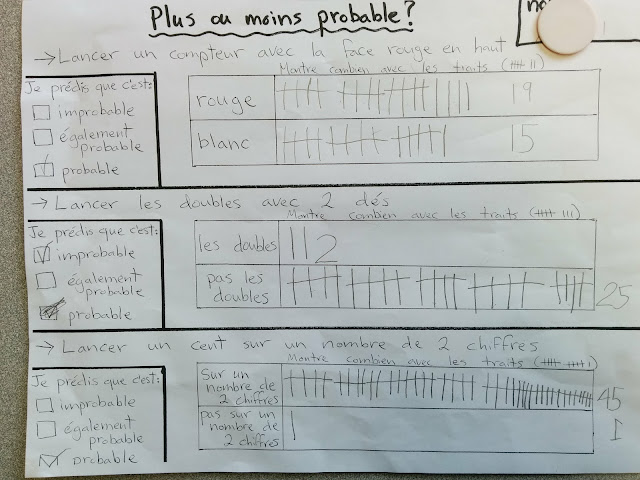In math, we learned about probability and how to talk about it in French. I introduced the terms for a range of probability: certain, probable, également probable, improbable, impossible. We defined these by looking at 5 collections of blue and/or yellow counters, in 5 different configurations. I asked the students the likelihood of getting a blue counter if you closed your eyes and picked 1 counter from the bowl of all-blue counters. They easily matched "certain" with that. The 4 other collections were: mostly blue; half blue/half yellow; mostly yellow and all yellow. The kids matched the 4 other probability words with them, in terms of the likelihood of drawing a blue counter. Then we tested our labelling by putting each collection of counters in a bag and passing it around the circle, with 5 students drawing out 1 counter. We recorded which colour counter was drawn each time in a chart.
Then the kids had 3 independent tasks to perform for which they first had to predict the probability of a certain outcome. We connected 3 probability words to 3 known math symbols.
Then students recorded the actual outcome of each task. They tossed a 2-sided counter to see how many times it came up red or not, they rolled 2 dice to see how many times they got doubles or not, and they tossed a cent onto a hundred square to see how many times it landed on a 2-digit number or not. They recorded their results with tally marks so they could count by 5 to get the total at the end.
Then we looked at some of the results and talked about how we were able to predict the probability of the given outcomes.
The kids also made their final entries in their plant journals.














No comments:
Post a Comment